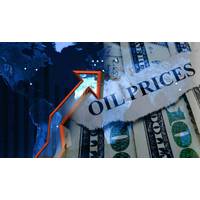Rising Oil Prices Herald Next Phase in Cycle
Oil prices are now in the top half of the cycle, with benchmark Brent on Thursday trading above $80 per barrel for the first time since November 2014.
In real terms, prices averaged $75 per barrel over the course of the last full cycle, which lasted from December 1998 to January 2016.
The recent rise in prices sends a strong signal about the need for more production and slower growth in oil consumption.
In the next few months, the narrative will increasingly turn to boosting supply and restraining demand in order to stabilise inventories and return the market to balance.
Between 2014 and 2017, oil market “rebalancing” meant restricting production, stimulating demand and cutting excess inventories.
For the rest of 2018 and 2019, rebalancing will mean precisely the opposite.
Cyclicality
The oil industry has always been subject to deep and prolonged cycles of boom and bust, and there is no reason to think the next few years will be any different.
Cyclical behavior is the single most important distinguishing characteristic of oil markets and prices, and is deeply rooted in the industry’s structure.
The price cycle is driven by the low responsiveness of production and consumption to small changes in prices, at least in the short term.
The behavior of many oil producers and consumers exhibits a strong backward-looking component, so decisions tend to be based on where prices have been recently rather than where they are likely to go.
But most importantly, the oil markets are a complex adaptive system which is subject to multiple feedback mechanisms operating at different speeds and timescales.
The price cycle is driven by the interaction of positive feedback mechanisms (which magnify shocks) and negative feedback mechanisms (which dampen them).
In the short run, positive feedback mechanisms are more influential and tend to push the market even further away from balance following an initial disturbance.
In the medium and long term, however, negative feedback mechanisms dominate and will eventually force production and consumption back into alignment.
Negative feedback mechanisms are familiar to economists as Adam Smith’s “invisible hand” and in the long run they exert a powerful influence on the oil market.
But the existence of positive feedback mechanisms can cause a lot of volatility in the short term and tends to cause oil prices to oscillate rather than converge on a steady equilibrium value.
Short Term
In the next few months, positive feedback will tend to push oil prices even higher by boosting demand further and capping supply growth.
Rising oil revenues will drive faster economic growth in oil-producing countries, increasing their domestic fuel consumption and tightening the oil market even more.
Rising oil prices and production will also increase the oil industry’s internal fuel consumption for drilling, refining, transportation and all along the supply chain.
At the same time, rising oil prices and output tend to be associated with tightening markets and increasing costs for everything from labour and raw materials to engineering and service contracts.
Resource-owning governments will also tend to take the opportunity to push for higher tax and royalty rates to capture more of the windfall from higher prices.
And as prices rise, oil producers will be able to achieve their revenue targets by holding output unchanged rather than increasing it.
For all these reasons, oil production will tend to respond slowly to an increase in prices in the short term, while consumption will remain more buoyant than expected, intensifying the upward pressure on prices.
Medium Term
In the medium term, however, negative feedback mechanisms become progressively more important and will eventually push the market back towards balance.
Higher oil prices will boost corporate cash flows and improve the availability of equity and debt financing for oil producers. In time, that will boost exploration and production spending and eventually output.
Most of the initial production gains will come from expansions of existing fields and projects, which tend to be faster, cheaper and lower-risk, before firms turn to developing more ambitious and risky new sources of supply.
On the demand side, high prices will eventually promote renewed interest in fuel economy as well as operational/behavioral changes intended to cut fuel consumption.
High prices will push energy conservation back up the agenda for corporations and governments and renew interest in switching to cheaper non-oil sources of energy.
Rising prices will probably spur interest in buying smaller and more fuel-efficient cars as well as electric vehicles and trucks, trains and ships running on liquefied natural gas/compressed natural gas.
Higher prices will also restrain demand by slowing economic growth in consuming countries, at least at the margin.
All these supply- and demand-side responses take time to have an impact, but the higher prices rise and the longer they are expected to stay high, the more significant the eventual response.
The period of very high prices between 2011 and the first half of 2014 stimulated record increases in oil production as well as restraining consumption growth, and created the conditions for the subsequent slump.
That slump created the conditions for the current recovery by restraining production growth in the United States and other non-OPEC countries as well as stimulating demand.
Voluntary production restraints by OPEC and some other oil-exporting countries, coupled with the involuntary collapse in production from Venezuela, accelerated a recovery that was starting to happen anyway.
Now the market is embarking on the next stage of the cycle, with high and rising prices beginning to stimulate an increase in production, restrain fuel use, and eventually create conditions for the next downturn.
(Editing by Dale Hudson)





